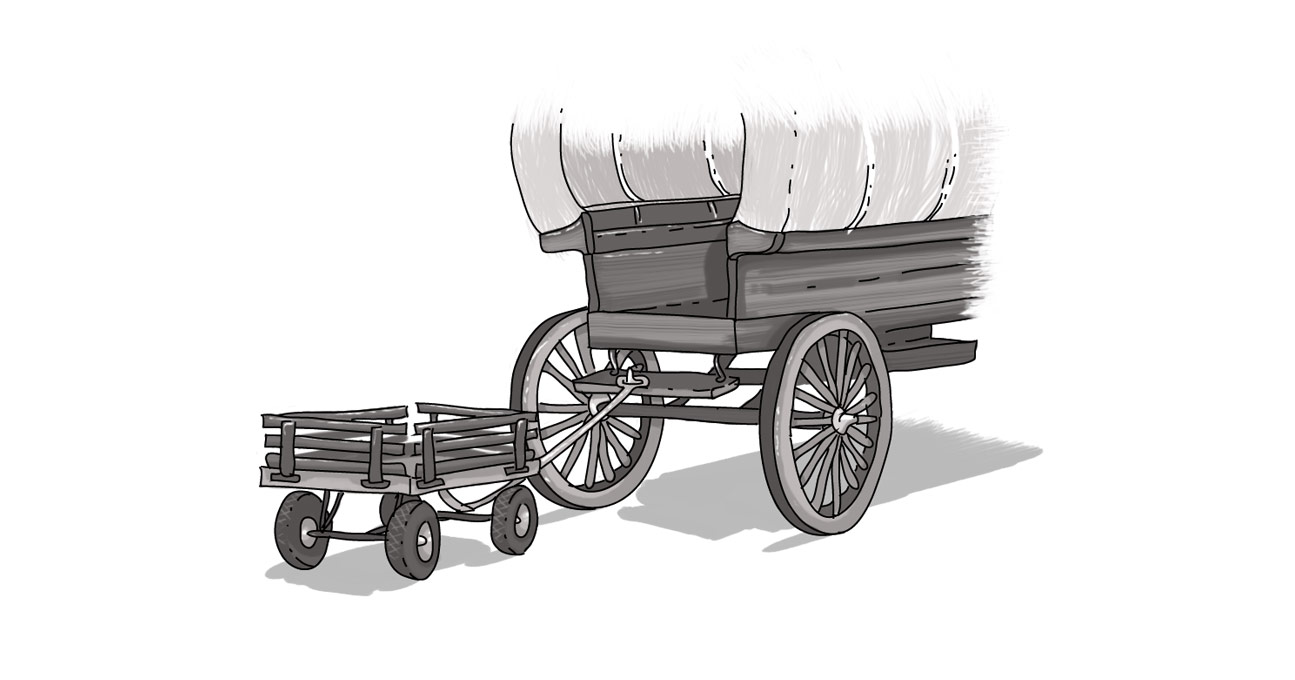Finding the Right Digital Solution? Make Sure You Get the Horse Before the Cart

Whether you're talking about web design, digital marketing, or traditional bricks-and-mortar-based communication, companies often fall victim to putting the ol' cart before the horse – they've already defined the solution and are coming to you, the content creator or developer, for implementation.
How many times have you heard one of these:
- We need a blog;
- We should make a viral video;
- Let's make an app;
- I think our customers would like a newsletter.
And there are dozens of other similar statements. Externally, most corporate communications people may pause, steel their courage, and respond "Sure, that's great."
At best, internally, they may be seething or perplexed – not because they don't want to do the work, but rather because they don't understand the point. At worst, internally, they just acquiesce and take it as another make-work project.
In and of themselves, these actions aren't necessarily bad. However, they can be spectacularly ineffective and misplaced. It's not enough to do them just to do them – they have to be part of a larger strategy with defined goals and targets.
Don't Retrofit the Solution; Start with the Problem
Effective strategy comes not from having access to the latest and greatest tools; it comes from knowing how to find the right tool for the job and getting the most out of it.
Marketers are always in fear of falling behind and missing out, but remember you're not chasing 'next'; you're serving your customers – both existing and potential. And the tools at hand may be enough.
But before you get to selecting a tool, what are you trying to accomplish? What is the issue at hand? The wonderful thing about going through a discovery process is that it allows you to identify what your actual wants and needs are, as opposed to what you think they may be.
Back in the day, I would run some Kaizen events. What I loved most about these discussions was the subtle shift from, "We know what the problem is" to "Wow, that's just a symptom – here's the real issue[s])." The same can be said for your business. You may think a new app will solve all your problems, but if the messaging and user experience is all wrong at the foundation, no solution will be effective.
Take a look at what you want to do and where you want to be, as a business. What is your actual goal? Define it, then figure out what comes next.
Stay Away from The Vague
This is often a challenge in the corporate environment. Many have a culture of Biz Speak: "We want to better leverage our core competencies to maximize our resources," or "We want to better engage our user base."
But what does that mean? Really? If you can't define actual goals and metrics, you're likely to fail.
You can use SMART templates if you want, but I think you can also just cut to the chase: What do you really want?
We want to increase sales in product X by 15 per cent by Q4. We want to increase social interactions by 25 per cent amongst the 18-24 demographic by December. We want to transition 33 per cent of our bricks-and-mortar business to digital conversions by Q1 2015.
From there you can determine which tactics you need to implement.
Know Your Audience
You need to know your target demographic. What's the point of a flashy iPhone app if your customer base prefers browsing the Web? If you're considering video what makes more sense: a full YouTube-based video or a quick-hit Vine?
Take, for example, the aforementioned goal of increasing social interactions amongst the 18-24 demographic. If you current strategy is 100 per cent Facebook, you may be having challenges. Do some research, talk to or poll your customers – find out what services they're using and see if it makes sense to you.
Conversely, if you're trying to appeal to a senior demographic, maybe mobile's not the way you want to go.
Are your customers watching TV from a couch or in palm of their hands? Do they read newspapers or listen to podcasts? Knowing how your audience consumes content can help you develop content strategies that actually work.
Use Your Knowledge for Good
Learning the hows and whys of your customers' behaviours and desires essentially builds the path to your solution.
The lure of the new and shiny can be powerful, but when it comes to converting customer interactions, all that glitters may not be gold. Knowledge of your customers and how to use the tools of the trade is the only true currency that can trade in success.
As always, the comments are open. Where would we find your cart? And how to you ensure what you're doing matters to your clients?
How do I choose what tools to use to reach my customers?
SUBSCRIBE TO OUR E-NEWSLETTER
 Subscribe
Subscribe


